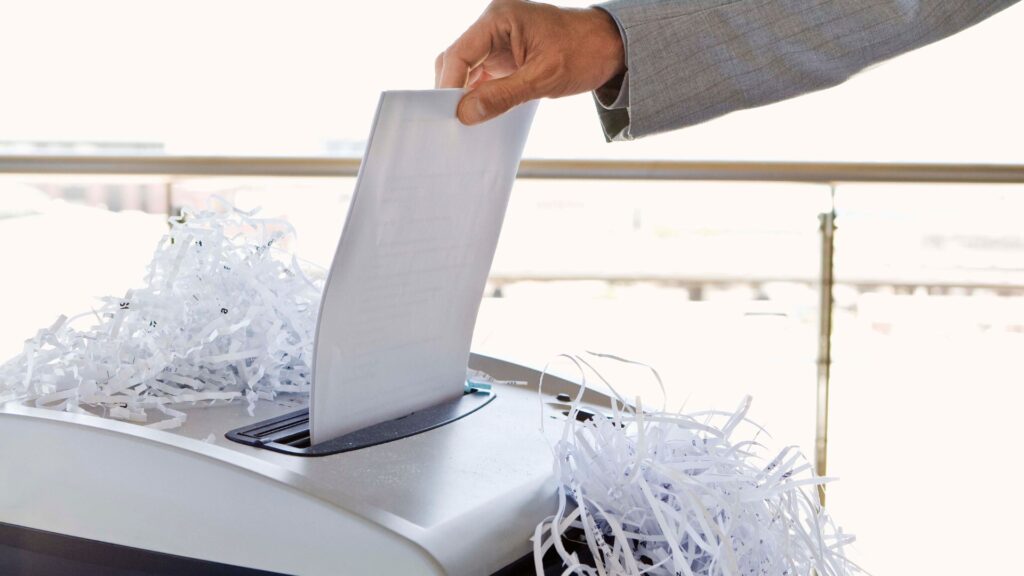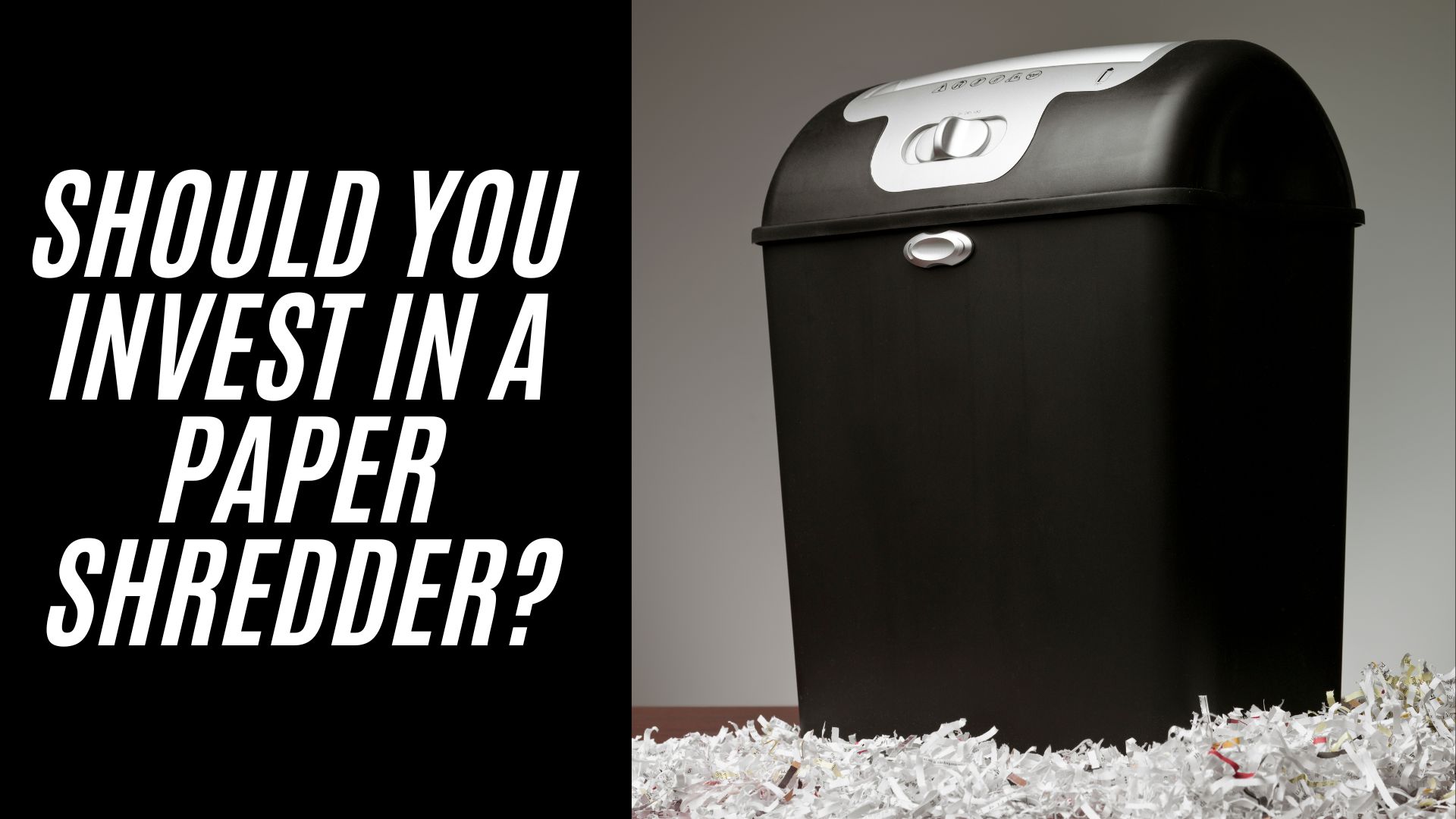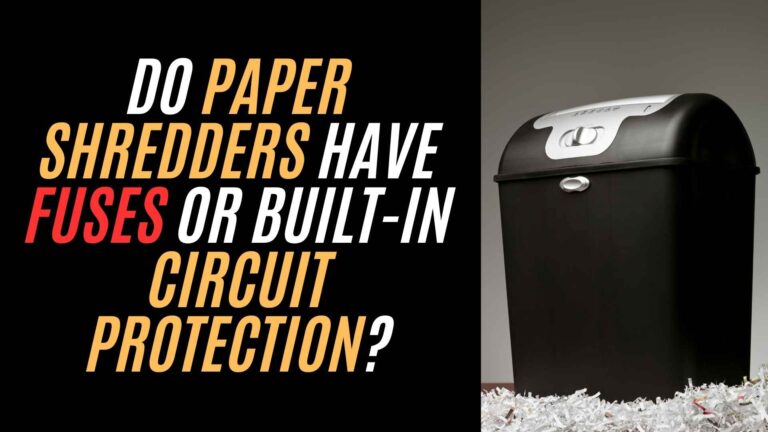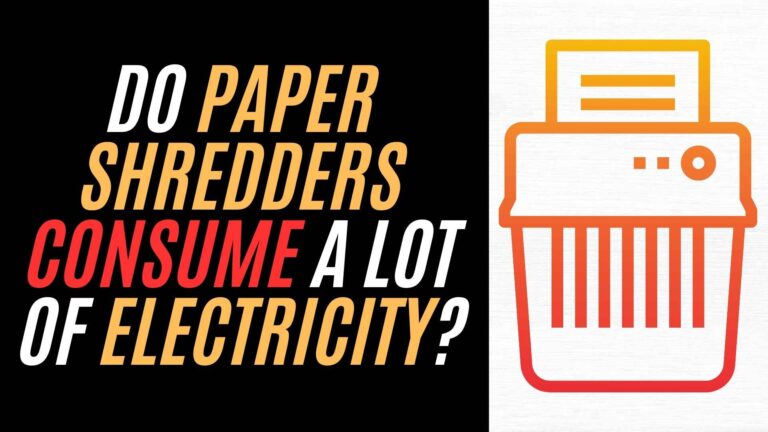In today’s digital age, safeguarding personal information is more crucial than ever. With the rise in identity theft and data breaches, it’s essential to consider effective methods for protecting sensitive documents. One such method is using a paper shredder. This article explores whether investing in a paper shredder is a wise decision in 2025, delving into the benefits, types, and key considerations for both home and office use.
Why Consider Buying a Paper Shredder in 2025?

The Growing Need for Document Security
Identity theft and cybercrime have seen significant increases in recent years. In 2024, the Federal Trade Commission (FTC) received approximately 1.4 million reports of identity theft, contributing to an estimated $10.2 billion in losses due to cybercrime.
This upward trend highlights the importance of securely disposing of documents containing personal information.
Moreover, regulations like the General Data Protection Regulation (GDPR) and the Health Insurance Portability and Accountability Act (HIPAA) mandate the secure disposal of sensitive data. Non-compliance can result in hefty fines and legal repercussions, making it imperative for individuals and businesses to adopt proper document destruction practices.
Environmental and Privacy Benefits
Shredding paper not only protects privacy but also benefits the environment. Shredded paper can be recycled more efficiently, reducing waste and promoting sustainability. By investing in a paper shredder, you contribute to eco-friendly practices while ensuring that your confidential information remains secure.
Cost-Effectiveness Compared to Alternatives
Hiring professional shredding services can be costly, especially for small businesses or individuals with regular shredding needs. Investing in a personal or office shredder offers a cost-effective solution, providing convenience and immediate access to secure document disposal. Over time, the savings from reduced service fees can offset the initial investment in a shredder.
The escalating threats to personal and organizational data, coupled with environmental and financial considerations, make owning a paper shredder a prudent choice in 2025.
Key Types of Shredders

Strip-Cut Shredders: Advantages and Limitations
Strip-cut shredders are the most basic type, cutting documents into long, narrow strips. While they are generally more affordable and can handle high volumes of paper, they offer the lowest level of security. The resulting strips can potentially be reassembled, making them less ideal for confidential documents.
Cross-Cut Shredders: Better for Privacy and Security
Cross-cut shredders enhance security by slicing paper both vertically and horizontally, producing small, confetti-like pieces. This makes it significantly more challenging to reconstruct documents, providing a higher level of confidentiality suitable for most sensitive information.
Micro-Cut Shredders: Best for Sensitive Information
For the utmost in document security, micro-cut shredders reduce paper into tiny particles, making reconstruction virtually impossible. These shredders are ideal for disposing of highly sensitive information, such as financial records or personal data, ensuring maximum protection against identity theft.
Advanced Features in 2025 Models
Modern shredders have evolved to include several advanced features aimed at enhancing user experience and efficiency:
- Noise Reduction Technology: Many 2025 models are designed with low-noise mechanisms, making them suitable for shared workspaces or home offices where minimal disruption is desired.
- Energy-Efficient Designs: With a growing emphasis on sustainability, newer shredders often incorporate energy-saving modes that reduce power consumption when the machine is idle, contributing to lower electricity bills and environmental impact.
- Automatic Jam Clearing and Auto-Feed Mechanisms: To prevent the frustration of paper jams, many shredders now feature auto-reverse functions that detect and clear jams automatically. Additionally, auto-feed capabilities allow users to load a stack of papers at once, which the machine will then shred independently, saving time and effort.
Price Ranges and What to Expect
The cost of paper shredders varies based on their capabilities and features:
- Entry-Level: Affordable options suitable for personal use typically range from $30 to $60. These models often include basic strip-cut or cross-cut functionalities and are ideal for occasional shredding needs.
- Mid-Range: Priced between $60 and $150, mid-range shredders offer a balance between cost and features. They usually provide cross-cut or micro-cut capabilities, higher sheet capacities, and additional features like jam prevention and moderate continuous run times.
- High-End: Designed for heavy-duty or office use, high-end shredders can range from $150 to $500 or more. These machines boast advanced features such as large-capacity bins, extended continuous run times, auto-feed trays, and the highest security micro-cut shredding, catering to extensive and sensitive shredding requirements.
Understanding these options will help you choose a shredder that best fits your specific needs and budget, ensuring efficient and secure disposal of your documents.
Assess Your Needs
Personal vs. Office Use
First, determine where you’ll be using the shredder. For personal use, a compact model with moderate capacity should suffice. In contrast, office settings may require robust machines capable of handling higher volumes. For instance, the Fellowes Powershred 79Ci is praised for its large capacity, making it suitable for home offices.
Volume of Shredding Required
Consider how much you’ll be shredding regularly. If you anticipate shredding a few documents occasionally, a basic model will do. However, for frequent or bulk shredding, look for machines with higher sheet capacities and longer continuous run times. The Bonsaii EverShred C169-B, for example, can run for up to 30 minutes, handling substantial workloads efficiently.
Security Level Considerations
Shredders come with different security levels, classified by the P-rating system, which indicates the size of the shredded particles.
- P-3 and P-4: Suitable for most confidential documents, producing cross-cut particles. The Fellowes Powershred M-8C offers P-3 security, ideal for personal use.
- P-5 and Above: For highly sensitive information, micro-cut shredders provide P-5 security, turning paper into tiny pieces. The Fellowes Powershred 62MC is a great example, offering high security for confidential documents.
Practical Features to Look For
- Bin Size: A larger bin reduces the frequency of emptying. For example, the Fellowes Powershred 79Ci has a 6-gallon capacity, accommodating more shredded material.
- Sheet Capacity: This indicates how many sheets can be shredded at once. Entry-level models may handle 6-8 sheets, while more advanced ones can process 14 or more. The Bonsaii EverShred C169-B can shred up to 14 sheets simultaneously.
- Continuous Run-Time: If you have large shredding tasks, consider a shredder with a longer run-time before it needs to cool down. The Bonsaii EverShred C169-B offers a 30-minute continuous run-time, suitable for heavy-duty use.
- Safety Features: For households with children or pets, safety features like automatic shut-off upon detecting hands near the feed can prevent accidents. The Fellowes Powershred 79Ci includes SafeSense technology for enhanced safety.
Top Paper Shredders Brands to Consider in 2025
When it comes to reliability and performance, certain brands stand out:
- Fellowes: Known for durable and efficient shredders suitable for various needs. Models like the Powershred 79Ci are well-regarded for their capacity and jam-proof features.
- Bonsaii: Offers a range of shredders known for long run times and high sheet capacities, such as the EverShred C169-B.
- Amazon Basics: Provides reliable shredders for both personal and professional use, with models like the C276-A US receiving positive reviews for performance and security.
By evaluating your specific needs and considering these factors, you’ll be well-equipped to choose a paper shredder that ensures security and efficiency.
Recommended Paper Shredders for 2025
Selecting the right shredder depends on your specific requirements. Here are some top picks for various needs:
Best for Home Use
- Fellowes Powershred M-8C: This cross-cut shredder handles up to 8 sheets at a time and is perfect for moderate personal use. It’s compact and includes safety features, making it ideal for home environments.
Best for Small Offices
- Fellowes Powershred 79Ci: With a 16-sheet capacity and a 6-gallon bin, this shredder is suitable for small office settings. It features 100% jam-proof technology and SafeSense for hand protection.
Best for High-Security Needs
- Aurora AU1060MA 10-Sheet Micro-Cut Shredder: This shredder offers high-security micro-cut shredding, ideal for sensitive documents. It balances performance with security, making it a top choice for those requiring maximum confidentiality.
By considering these options, you can select a shredder that aligns with your specific needs, ensuring efficient and secure document disposal.
Regular Cleaning and Lubrication
Using Shredder Oil
Regularly oiling your shredder’s blades is crucial to prevent jams and maintain efficiency. It’s recommended to use official shredder oil or lubricant sheets specifically designed for your machine. Avoid using aerosol oils, as they can be a fire hazard.
How to Apply Shredder Oil:
- Direct Method: Pour a small amount of shredder oil directly into the paper feed opening, then run the shredder in reverse mode for 10-20 seconds to distribute the oil evenly.
- Indirect Method: Apply a thin line of oil in a cross pattern on a sheet of paper, let it soak in, and then shred the paper. Run the shredder in reverse for a few seconds to spread the oil.
Regular lubrication keeps the cutting blades in good condition and extends the lifespan of your shredder.
Best Practices for Long-Term Performance
Avoiding Staples, Excessive Paper, or Non-Paper Items
While some shredders can handle staples and paper clips, it’s best to remove them to prevent unnecessary wear on the blades. Always adhere to the manufacturer’s guidelines regarding the maximum number of sheets to avoid overloading the machine.
Proper Emptying of the Bin
Regularly empty the shredder bin to prevent paper buildup, which can lead to jams and overheating. Keeping the bin clean also reduces dust accumulation inside the machine.
Troubleshooting Common Issues
Overheating
Shredders can overheat if used continuously beyond their designated run time. If your shredder stops unexpectedly, it might need to cool down. Allow it to rest for the period specified in the user manual before resuming use.
Paper Jams
Paper jams are common but manageable. To clear a jam, first unplug the shredder. Use the reverse function to back out the jammed paper. If necessary, gently pull out remaining pieces with tweezers. Regular oiling can also help prevent future jams.
Shredder Not Turning On
If your shredder isn’t operating, ensure it’s properly plugged in and the power switch is on. Check for any blown fuses or tripped circuit breakers. Some models have safety features that prevent operation if components aren’t correctly aligned, so verify that all parts are properly in place.
Conclusion: Is Purchasing a Paper Shredder a Wise Choice in 2025?
Investing in a paper shredder in 2025 offers numerous benefits, including enhanced document security, environmental advantages, and cost savings over time. With the increasing importance of protecting personal information, a shredder provides a convenient and effective solution for both home and office use.
Key Points to Consider:
- Security Needs: Assess the sensitivity of the documents you handle to determine the appropriate shredder type and security level.
- Volume of Use: Consider how frequently you’ll use the shredder to choose a model that aligns with your shredding volume.
- Features and Budget: Evaluate essential features such as sheet capacity, run time, and safety mechanisms, and select a shredder that fits your budget.
Frequently Asked Questions
How much should I spend on a paper shredder?
The amount you should spend on a paper shredder depends on your specific needs:
- Personal Use: For occasional shredding of non-sensitive documents, a basic strip-cut shredder priced between $20 to $50 may suffice.
- Confidential Documents: If you’re handling sensitive information like bank statements or personal data, investing in a cross-cut or micro-cut shredder ranging from $50 to $150 is advisable for enhanced security.
- High-Security Needs: For highly confidential documents, such as legal or medical records, consider a micro-cut shredder priced above $150 to ensure maximum protection.
Remember, investing a bit more upfront can provide better security and durability in the long run.
What’s the difference between cross-cut and micro-cut shredders?
Both cross-cut and micro-cut shredders offer more security than strip-cut models, but they differ in the size of the shredded particles:
- Cross-Cut Shredders: These cut paper into small rectangular or diamond-shaped pieces, providing a medium level of security suitable for most confidential documents. They typically produce about 400 particles per A4 sheet.
- Micro-Cut Shredders: These machines cut paper into even smaller particles, offering a higher level of security ideal for highly sensitive information. They can produce over 2,000 particles per A4 sheet, making reconstruction extremely difficult.
Choosing between the two depends on the sensitivity of the documents you intend to shred.
How often should I oil my shredder?
Regular maintenance, including oiling, is essential to keep your shredder running smoothly:
- Frequency of Use: For moderate use (a few times a week), oiling the shredder every month is recommended.
- Heavy Use: If the shredder is used daily or for large volumes, consider oiling it every four hours of shredding time.
Always refer to the manufacturer’s guidelines for specific maintenance instructions.
Can I shred credit cards or CDs with a regular shredder?
Not all shredders are designed to handle materials like credit cards or CDs:
- Check Specifications: Before attempting to shred plastic materials, verify that your shredder model supports it. Some shredders have dedicated slots or are specifically designed to handle credit cards and CDs.
- Avoid Damage: Using a shredder not equipped for these materials can damage the blades and motor.
If you frequently need to dispose of such items, consider investing in a shredder that explicitly states it can handle them.



